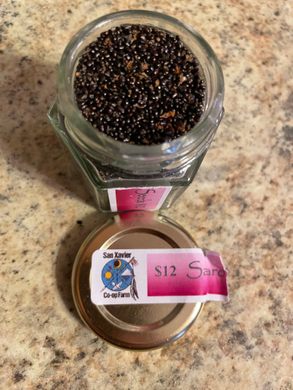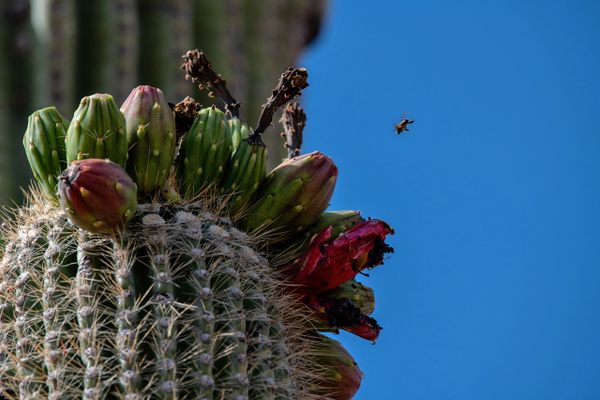San Xavier Co-op Farm
Run by members of the Tohono O'odham Nation, this community farm nurtures traditional desert cultivars.
“We’re not talking first-generation, second-generation farmers,” says Katie Hilbert, the marketing and sales coordinator at San Xavier Cooperative Farm. “We’re talking 4,000 years.”
Hilbert is referring to the families who co-own the San Xavier Co-op, members of the Tohono O’odham Nation who are as rooted in the land as the cactus fruits they gather each year. Since 1971, the co-op’s conscientious agricultural practices and harvest of local and desert-adapted produce have nourished and preserved the Tohono O’odham Himdag, or “way of life,” that has thrived on this land for generations.
It wasn’t always easy. Tohono O’odham people traditionally practiced community agriculture. In the late 1800s, however, the United States government passed laws parcelling community land into separate family plots. Locals began working their own plots, rather than farming for the collective well-being. This, combined with the effects of nearby copper mining and industrial farming, led to a decline in the health of the land and the Santa Cruz River, the life-giving force that had long enabled the Tohono O’odham people to thrive in the parched desert.
Since 1971, however, members of the co-op have reclaimed their agricultural heritage. They farm based on respect for the sacredness of water, for elders, for the land, for living creatures, and for plants themselves. These management practices have born literal fruit, in the form of ample harvests.
Visitors to the co-op’s farm store will find the “three sisters” typical of indigenous American agriculture—corn, beans, and squash—but in the form of varieties especially adapted to the parched desert climate. The beans are hearty sun-lovers. The 60-day corn springs quickly into abundance at the touch of the late-summer monsoon. The squash, called ha:l, or “big squash,” grows up to 20 pounds. Upon harvest, it’s cracked open, cut into strips, and hung to dry for winter. Besides the cultivated food, co-op farmers also gather wild plants, including crimson prickly pear for jellies and juice, and mesquite, which locals mill and mix with water for a sweet, nutty drink.
The co-op’s commitment to respecting the land and its inhabitants, both human and nonhuman, has paid off. Recently, says Hilbert, for the first time in a long time, the life-giving waters of the Santa Cruz River have started to feed the fields once again. “There are some trickles of water in places, which makes people happy,” Hilbert says. “There’s some green coming back to the river.”
Know Before You Go
Visitors can stop by the farm's store to purchase local produce and crafts made by O'odham artisans. If you fancy a more hands-on experience, and you're not afraid of blistering sun, you can also volunteer to work the land. There are open volunteer sessions twice a week. You can check out upcoming events, and the dates and times of volunteer sessions, on the co-op's site.
























Follow us on Twitter to get the latest on the world's hidden wonders.
Like us on Facebook to get the latest on the world's hidden wonders.
Follow us on Twitter Like us on Facebook